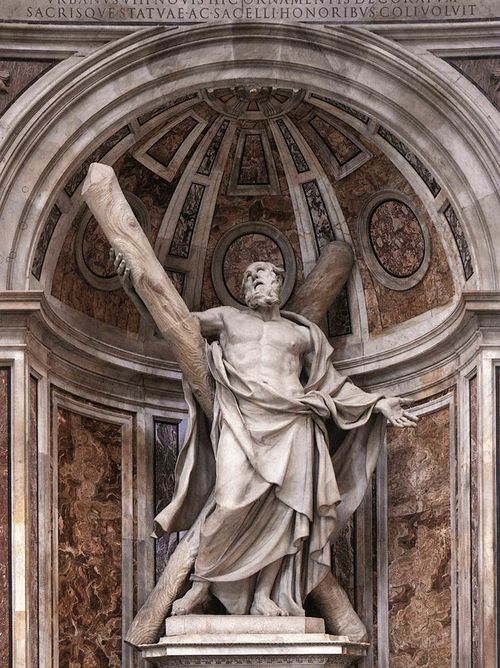Difference between revisions of "St. Andrew (1633 Duquesnoy), art"
Jump to navigation
Jump to search
| Line 10: | Line 10: | ||
[[Category:1633|*Duquesnoy]] | [[Category:1633|*Duquesnoy]] | ||
[[Category:Art|1633 Duquesnoy]] | [[Category:Art--1600s|1633 Duquesnoy]] | ||
[[Category:Sculptures|1633 Duquesnoy]] | [[Category:Sculptures|1633 Duquesnoy]] | ||
[[Category:Andrew--art (subject)|1633 Duquesnoy]] | [[Category:Andrew--art (subject)|1633 Duquesnoy]] | ||
Revision as of 22:49, 5 March 2017
St. Andrew (1633) is a sculpture by François Duquesnoy.
Made between 1629 and 1633, the sculpture of St. Andrews by François Duquesnoy is one of the four larger-than-life statues at the corners of the crossing of St. Peter's Basilica. The other three statues are Bernini's Saint Longinus, Mochi's Santa Veronica, and Bolgi's St. Helena. Each statue depicts a venerated relic, which at the time, was the property of the Pope and St. Peters.
